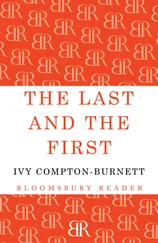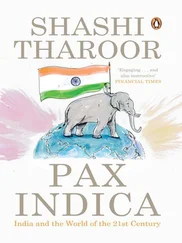Efficiency had long been a priority at Lyons, and the factories were organised very much according to the principles of Taylorism. Each was laid out to handle the particular kind of cake, pie, bun, loaf or bread roll in which it specialised. Under the direction of a Planning Office, every operation was time-and-motion studied to arrive at a fair, efficient time. These times were used both to calculate the number of staff required, and to compute the standard cost of the labour entailed in making the product, which in turn partly determined its selling price. The Lyons company secretary George Booth was interested in extending the same scientific approach to the clerical work of the company. He decided that the best way to find those with the skills to introduce such methods was to venture into graduate recruitment. None of the family board members had been to university, all following their fathers into the business at the earliest opportunity. The usual career path was a spell in the Trocadero kitchens, followed almost immediately by promotion to the management of one or other of the company’s businesses – tea, confectionery or hotels, for example. While some prided themselves on their ability to add up a column of figures rapidly and accurately, they had no experience of mathematical analysis or scientific enquiry. Below general management level in Lyons the usual approach was to recruit school leavers and train them for specific tasks. Academic qualifications had hitherto seemed irrelevant.
In 1923 Booth persuaded the board to add some intellectual rigour to the company’s management by recruiting some of the brightest young minds in the country. One of the five young men who constituted this new class of management trainee was John Simmons, who had just received a first-class degree in mathematics from Cambridge. It could have been a risky experiment: brilliant mathematicians do not always make good managers (some have been notoriously incapable of tying their shoelaces). Nonetheless, either by luck or judgement, in John Simmons Booth had found exactly the person he needed.
Born in Ceylon (now Sri Lanka) in 1902, John Richardson Mainwaring Simmons was the son and grandson of missionaries who dedicated their lives to spreading the Christian gospel in the Indian subcontinent. His mother died when he was only five. Two years later his father remarried, to a colleague in the Church Missionary Society. A boy of outstanding intellectual gifts, in 1920 John Simmons entered the University of Cambridge to read mathematics, and emerged three years later with first-class honours. At the time his choice of a career in a catering company was somewhat unexpected for a wrangler, the honorific title of Cambridge’s top mathematics graduates. It was even less expected that a company such as Lyons would regard pure mathematics as relevant to its day-to-day activities, beyond the basic task of accurate accounting. Yet Lyons had always been open to progressive ideas in managing its manufacturing operations; it was not hard for Booth to persuade the board that they needed to be equally progressive on the clerical side.
Simmons was unobtrusive in appearance; of medium height and build, he always dressed soberly in a jacket and tie. His hair was neatly combed straight back from his high forehead; his expression was habitually serious but even as a young man he carried an air of absolute conviction. He arrived at Cadby Hall knowing little of business. Nothing in his pious childhood or his years of intellectual endeavour at Cambridge had prepared him for the reality of life at Lyons. On his arrival he was put to work in a department where black-coated clerks still stood at Dickensian high desks entering figures in huge ledgers by hand. Typewriters and adding machines had been introduced into some Lyons departments before 1900 but there had been no serious attempt to rationalise office methods.
A quiet, austere and intellectually exacting man, Simmons found his spiritual home at Lyons; he was to remain with the company for forty-five years. Taken on in the junior role of statistician and management trainee, he nevertheless reported directly to Booth and so had unprecedented access to the highest levels of the Lyons management. Booth gave him a free hand to investigate clerical operations at Lyons and make recommendations. He immediately began to apply his analytical skills to the task of increasing efficiency through eliminating duplication and any unnecessary paperwork. He looked for rational alternatives to methods that had evolved in more or less ad hoc fashion. He streamlined and simplified, breaking jobs down into their component parts and allocating tasks to specialised clerks. He extended the use of office machines wherever they made economic sense.
His top-down approach – analysing the work of the clerks and then telling them how to do it better – owed a great deal to the examples of Taylor and Leffingwell, but he soon found that his mentors had underestimated the human factor. For example, Lyons had three central clerical departments: Accounts, which kept the basic records of incomings and outgoings and managed the payroll; the Stock Department, which kept stock records and computed the costs of producing and distributing Lyons products so that they could be priced accurately; and the Checking Department, which checked the cash takings of the catering establishments against the waitresses’ bills. These departments kept records that were intended only for the general managers on the board. The managers of the individual departments – Bakeries, Teashops and so on – had their own offices and kept separate records for their own purposes.
Simmons initially favoured greater centralisation, and began by trying to bring all clerical work into the three main specialist departments. But he very quickly learned that ‘arguments which applied to machines did not necessarily appeal to human beings’ – a lesson that devotees of scientific management often had to learn the hard way. Imagine his chagrin when he discovered that one departmental manager, deprived of his personal platoon of clerks and told to get the information he needed from the central departments, had simply recreated his original office within a year of the change. Simmons ruefully admitted that ‘records had better be kept where they were going to be used, even if it meant they were kept somewhat less efficiently’.
Other innovations proved more durable. Simmons saw that office machines, such as adding and bookkeeping machines, brought advantages in terms of accuracy and efficiency. There was a problem, however. The American machines were designed to work with the decimal system, suitable for US dollars and cents. The Britain of the 1920s (and indeed for almost fifty years afterwards) used the idiosyncratically non-decimal pounds, shillings and pence of sterling currency. Moreover, weights and measures each had their own units, none of them decimal. In 1928 Simmons solved the problem by training the clerks to convert currency and weights and measures into decimal units before carrying out calculations on the machines, and then back again afterwards. Five years later a textbook, Office Practice , by William Campbell, described this innovation as what was ‘usually’ done.
True to his ancestry, Simmons went about his work with a missionary zeal. The company was supportive of his incremental reforms, but after a few years he felt he needed to establish the scientific approach to management on a more permanent basis. The board agreed to let him set up a department of Systems Research within Lyons – a team of analysts who would investigate inefficiencies and bottlenecks in the company’s office systems and propose solutions. A forerunner of what was later called the Organisation and Methods Department, it was one of the first such research departments in the country. Once it was up and running Simmons recruited a twenty-four-year-old chartered secretary called Geoffrey Mills to manage it. Mills quickly became an effective evangelist for Simmons’s scientific approach, and later published a series of textbooks on office management. Up to this point British authors had been slow to follow the American consultant William Henry Leffingwell’s lead in providing the tools to educate a new generation of managers. Mills’s first book, Office Organization and Method (1949) was dedicated to John Simmons and acknowledged his ‘authoritative criticism and advice’. It referred to Leffingwell’s textbooks, but at the same time echoed Simmons’s own mature reflection on the limits of the scientific approach to running an office. ‘The clerks … are often the most difficult to understand. It is they who make office management an art as well as a science.’
Читать дальше












